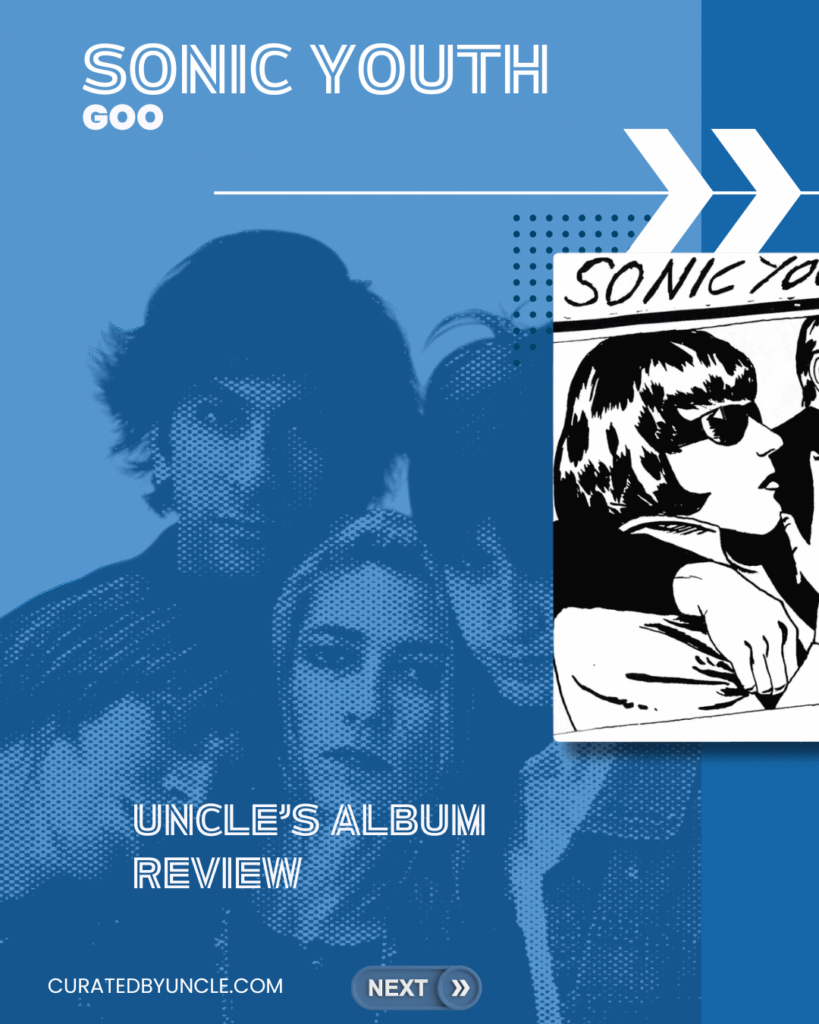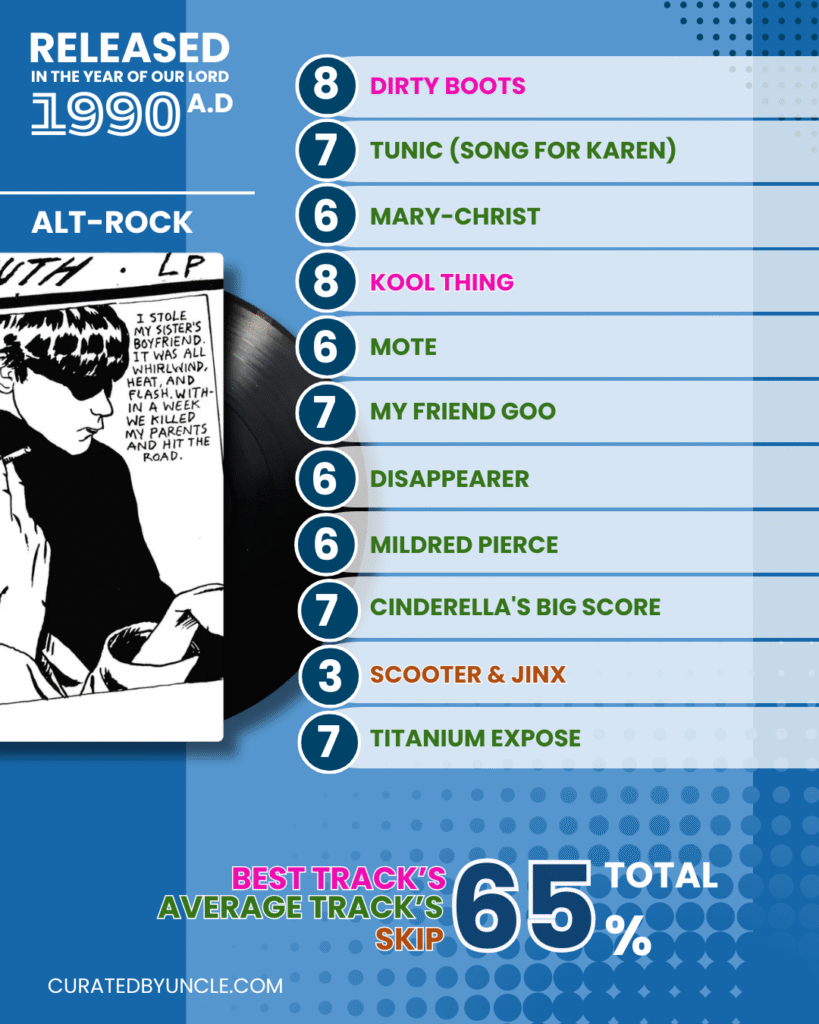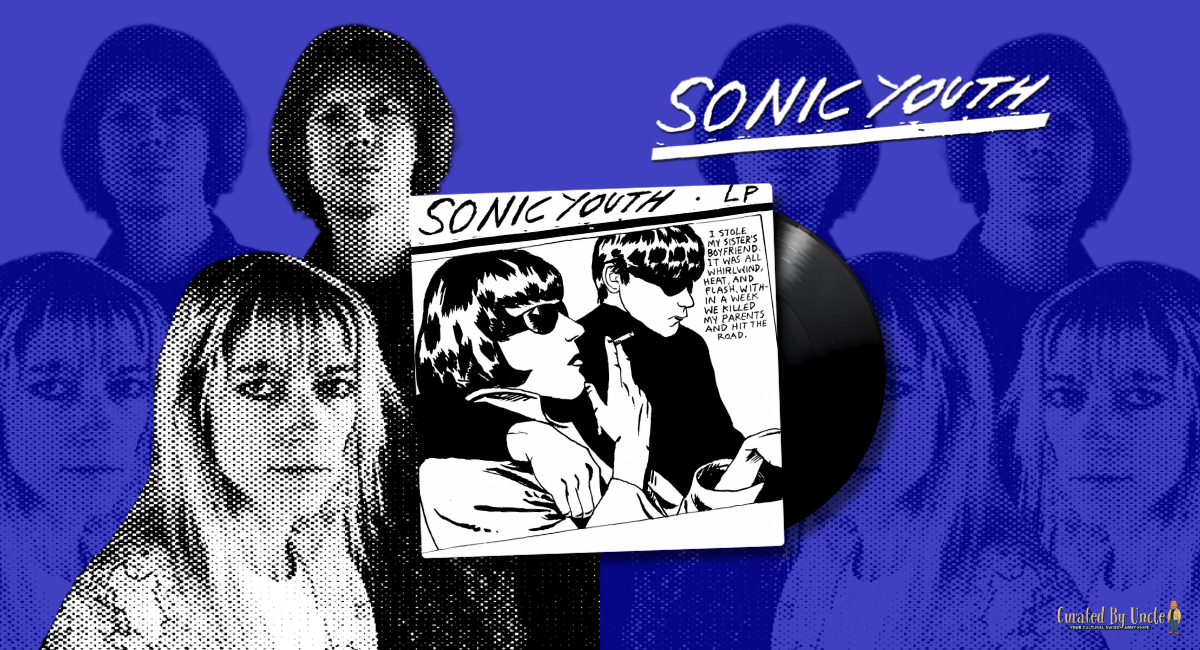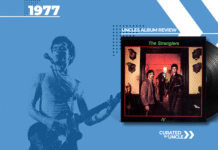Welcome to the Sonic Boom
Some albums purr seductively into your ear. Goo kicks the door in and sprays graffiti all over your frontal lobe. Released in 1990, Sonic Youth’s sixth album was their first on a major label (Geffen), a fact that somehow didn’t stop them from sounding like four art school dropouts strangling a cassette deck in a Lower East Side squat.
This was punk for people who thought punk was too polite. And I remember thinking, the first time I heard it, “Oh, this is what noise sounds like when it’s got a PhD in chaos.”
Table of Contents
Meet the Band: The Beautiful Noisemakers
At the heart of Goo is a band that never wanted to be pretty. Luckily, they weren’t.
- Thurston Moore – vocals, guitar, tall chaos conductor.
- Kim Gordon – vocals, bass, downtown cool incarnate, and secretly the band’s molten core.
- Lee Ranaldo – guitar, occasional vocals, sonic architect of feedback cathedrals.
- Steve Shelley – drums, holding down the rhythm like a man tap-dancing on a collapsing building.
They were the New York avant-garde’s wet dream: half noise collective, half rock band, with a record collection full of No Wave and an allergy to traditional chord progressions.
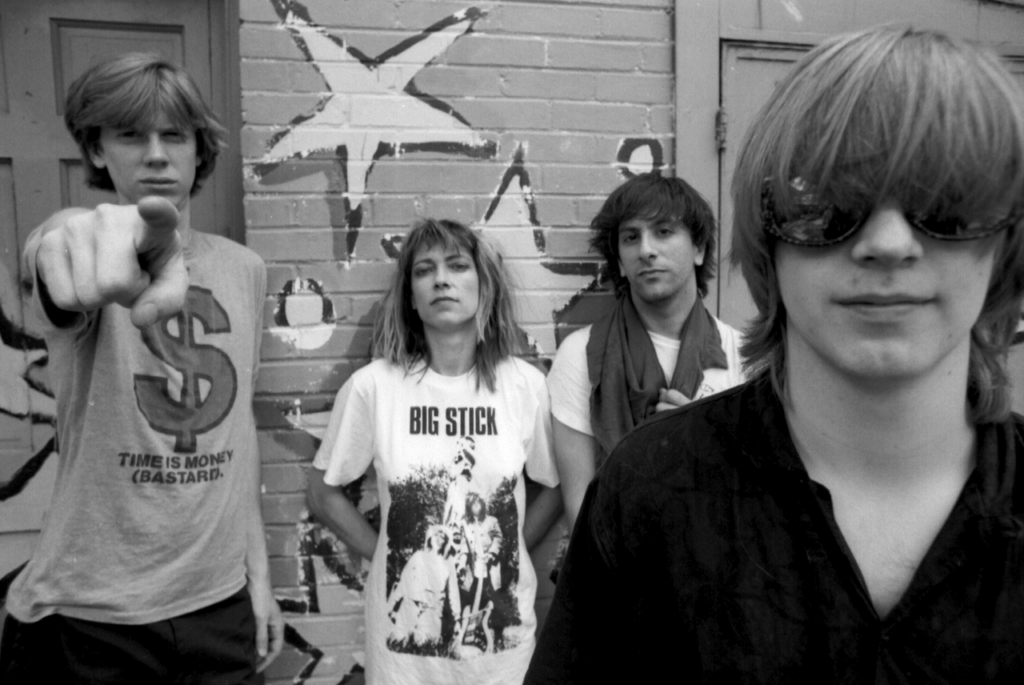
Track by Track: Feedback, Fury and Flannel
1. Dirty Boots
A love song for people who make out in parking lots behind noise venues. The guitar intro stumbles in like it’s drunk at a party, but by the time the distortion hits, it’s pure teenage euphoria – messy, loud and laced with romantic nihilism.
2. Tunic (Song for Karen)
Kim Gordon channels the ghost of Karen Carpenter and it’s both heartbreaking and slightly menacing. A feminist eulogy disguised as a dirge, with spoken word vocals floating above skeletal guitar textures. It’s haunting in all the right (and wrong) ways.
3. Mary-Christ
Fast, frantic and full of shouted metaphors. Like being yelled at by a poet in a lift. At under three minutes, it’s a sharp jab to the ribs – catchy, caustic and impossible to ignore. Bonus points for the unhinged guitar solo.
4. Kool Thing
Their quasi-hit, featuring Chuck D of Public Enemy. Kim Gordon interrogates male rock-star posturing like she’s holding a feminist seance. The riffs swagger, the lyrics stab and the result is cool as hell. Possibly the only pop song to mention “white supremacy.”
5. Mote
Lee Ranaldo’s turn at the mic. Starts like a lost REM b-side, ends in a feedback apocalypse. It’s melodic, then manic. You get the feeling that the guitars are arguing with each other and losing. Beautiful, sprawling noise.
6. My Friend Goo
Gordon gets weird and wonderful. The shortest song on the album, it’s a slacker punk nursery rhyme about a girl and her goo. Distorted, bizarre and charmingly pointless. Like a sugar rush in combat boots.
7. Disappearer
Melancholic and almost restrained. Almost. There’s a lurking sadness under the fuzz, like someone trying to walk home through a rainstorm of static. It’s dreamy in a dystopian way.
8. Mildred Pierce
A 2-minute shriek-fest that sounds like a chainsaw reading Sylvia Plath. Half instrumental freak-out, half unhinged vocal freak-out. Gordon howls “MILDRED PIERCE!” like she’s possessed by punk rock’s demonic aunt.
9. Cinderella’s Big Score
More Gordon-fronted rage. A tale of exploitation and female resilience, delivered over skittering drums and fuzz-drenched guitars. It’s ugly, sarcastic and kind of perfect. Think fairy tales narrated by someone with a switchblade.
10. Scooter + Jinx
Noise collage. Ambient interlude. Existential prank. Call it what you will, it’s 40 seconds of experimental whiplash. Like being shoved into a washing machine filled with broken pedals.
11. Titanium Exposé
A strangely optimistic closer. For a band that trades in dissonance, this track is almost…uplifting? Still noisy, but with an undercurrent of joy. Like the end of a very loud, very weird therapy session.
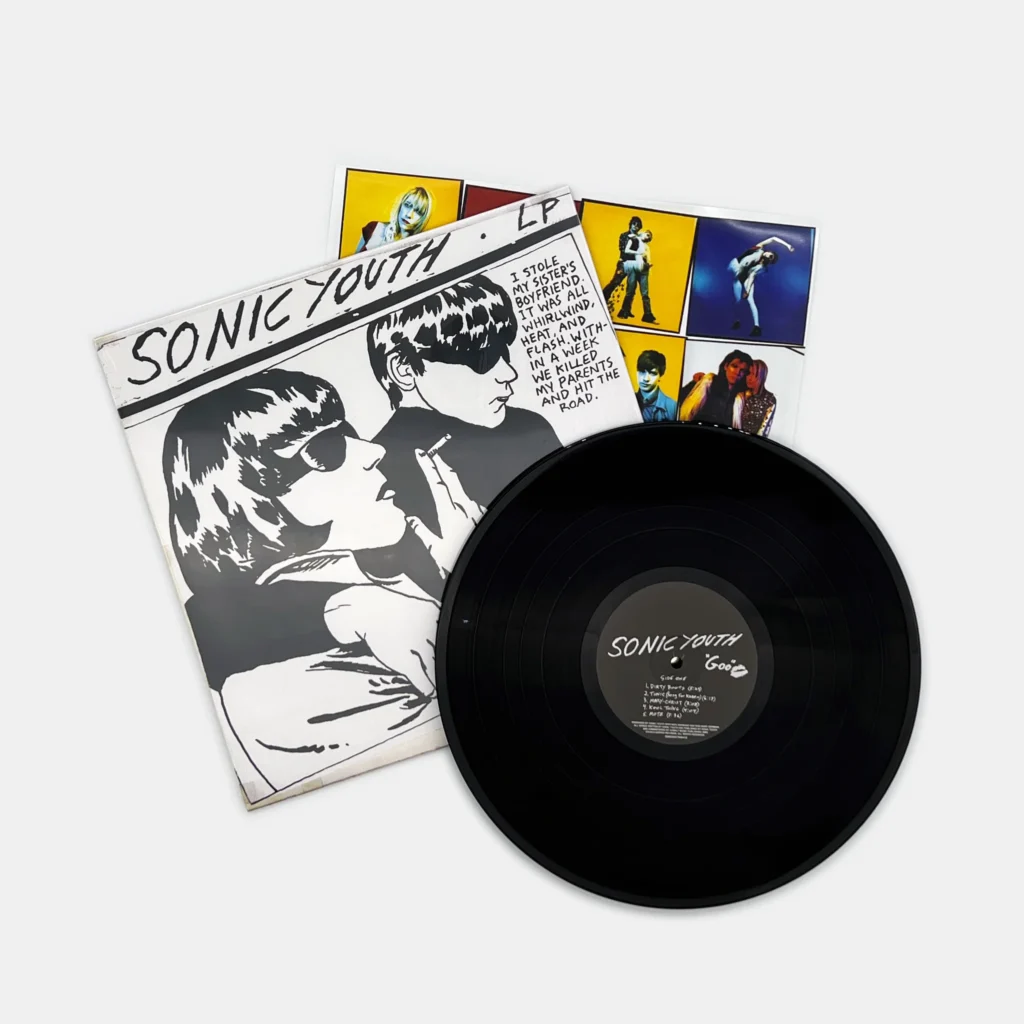
Themes: Grit, Gender and Guitar Abuse
Goo is an album obsessed with perception – of women, of fame, of coolness, of rebellion. Kim Gordon’s lyrics dissect power structures like a scalpel wrapped in bubblegum. Thurston and Lee build sonic structures just to tear them down again.
And running through it all is a thread of downtown decay, postmodern irony and beautiful feedback.
The Sound of Controlled Collapse: How Goo Was Made
Recorded in New York City at Sorcerer Sound and Greene St. Recording, Goo was produced by the band themselves alongside Nick Sansano and Ron Saint Germain. Despite stepping into the corporate infrastructure of Geffen Records, Sonic Youth managed to retain their sense of sonic anarchy.
Nick Sansano had previously worked with Public Enemy, and his influence helped shape the percussive edge of the record. Ron Saint Germain, known for his big rock sound, brought a polish that somehow didn’t dilute the raw chaos. The result? A bizarre alchemy – lo-fi textures wrapped in high-fidelity tape.
They used alternative tunings like they were sacrificial offerings to noise gods. Tape loops, backwards guitars, distorted vocals, Goo wasn’t just recorded; it was exorcised.
The Faces on the Cover (And the Screams Inside)
That iconic Raymond Pettibon cover art, the one with the deadpan noir couple? It looks like a pulp novel threw up on a zine. It’s the perfect visual companion to the album: cool, creepy and clearly not trying to please your mum.
Behind the posturing, though, Goo deals with disconnection, feminism, power structures and urban decay. And hair. Lots of hair.
Trivia: File Under Noise Facts
- The album’s cover art is by Raymond Pettibon, who also designed covers for Black Flag and Minutemen.
- “Kool Thing” features Chuck D from Public Enemy, but Flava Flav refused to appear.
- Kim Gordon wrote “Tunic” as a way to give Karen Carpenter a voice she never had.
- Geffen let Sonic Youth keep their artistic control, even when it made zero commercial sense.
Legacy: Indie Rock’s Trojan Horse
Goo didn’t just prove that weirdos could get major label deals, it proved they could thrive. It helped pave the way for Nirvana’s Nevermind, even if Sonic Youth would have rather paved over Nevermind with a jackhammer.
It’s noisy, yes. But it’s also smart, stylish and more influential than some entire genres.
My Final Thoughts: Noise That Still Resonates
Goo is not the band’s best record (that’s Daydream Nation, fight me), but it’s the one that kicked open the mainstream door. And then screamed into it.
If you like your music clever, chaotic and coated in New York grime – welcome home.
I think Goo still feels dangerous, not because it’s aggressive, but because it never tries to please you. It’s art-school angst weaponised, an album that dares you to misunderstand it.
And honestly? That’s what makes it last.

If You Liked Goo, I Recommend These:
- Pixies – Doolittle (1989): Surf-rock breakdowns and Biblical menace, all under three minutes.
- Bikini Kill – Pussy Whipped (1993): Riot grrrl fury and DIY charm, served loud.
- Sleater-Kinney – Dig Me Out (1997): Angular riffs, feminist rage, and emotional guitar duels.
